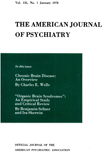THE ELECTROENCEPHALOGRAM AND PSYCHOPHYSIOLOGICAL REGULATION IN THE BRAIN
Abstract
The paradoxical association of relatively large amplitude alpha 10± per second activity with a relatively low level of waking cerebral function is attributed to the inhibitory effects of subcortical 10 ± per second pacing of activity in the cortex and to associated autonomic effects causing cerebral constriction. On the other hand the association of fast activity with cortical excitation, metabolite (CO2) production, and fast activity in cholinergic nerves accounts for associated vasodilatation. Thus, by the opposed effects of fast vs. 10 ± per second slower activity, cortical and subcortical mechanisms may regulate one another. This may provide a homeostatic mechanism by which excitation in the cortex is normally prevented from producing excessive discharge or from self-perpetuation. Underactivity, overactivity, or imbalance of these functions would account for the EEG and autonomic patterns seen in many abnormal mental conditions.
Access content
To read the fulltext, please use one of the options below to sign in or purchase access.- Personal login
- Institutional Login
- Sign in via OpenAthens
- Register for access
-
Please login/register if you wish to pair your device and check access availability.
Not a subscriber?
PsychiatryOnline subscription options offer access to the DSM-5 library, books, journals, CME, and patient resources. This all-in-one virtual library provides psychiatrists and mental health professionals with key resources for diagnosis, treatment, research, and professional development.
Need more help? PsychiatryOnline Customer Service may be reached by emailing [email protected] or by calling 800-368-5777 (in the U.S.) or 703-907-7322 (outside the U.S.).



